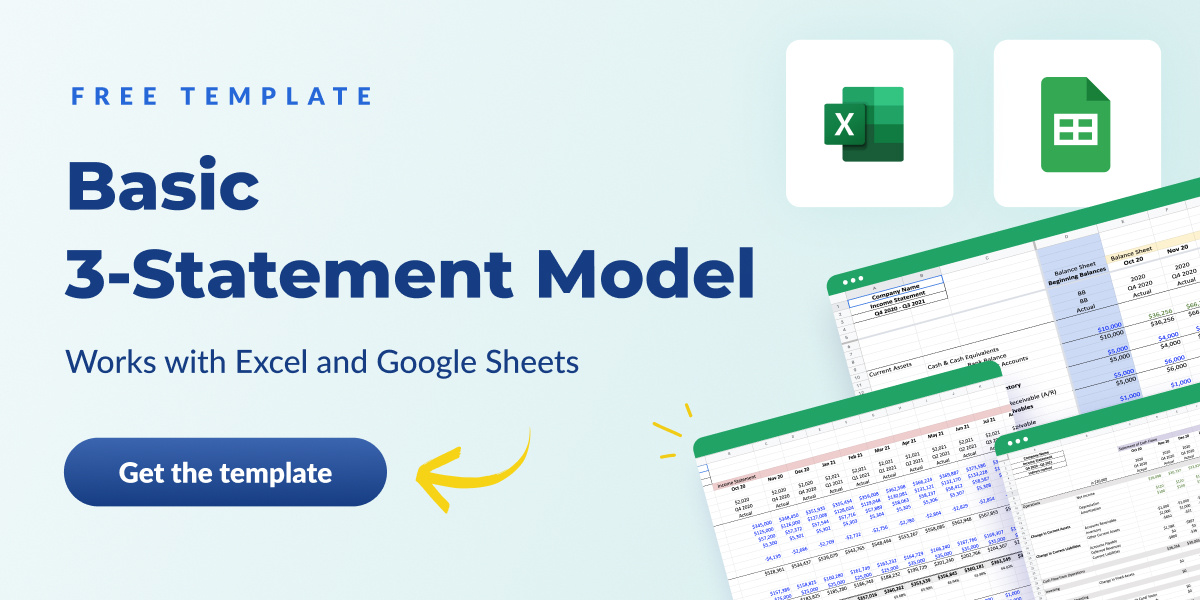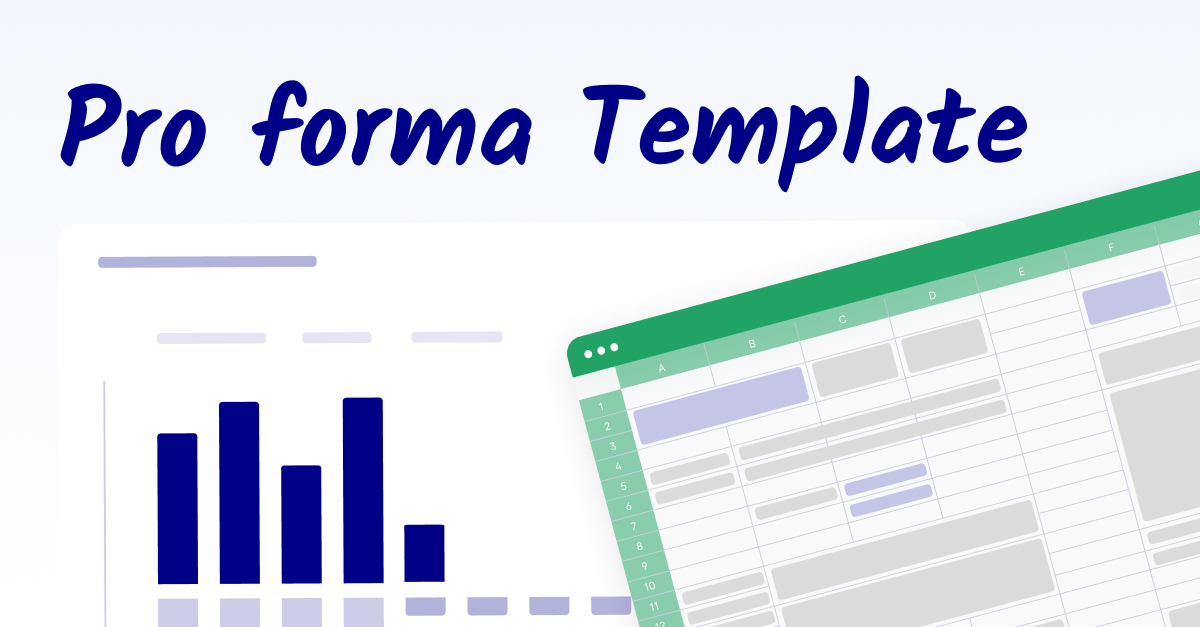TABLE OF CONTENTS
- Three types of financial statements
- Preparing your income statements
- Preparing your balance sheet statements
- Preparing your cash flow statements
Types of financial statements
The three main financial statements are the income statement, the balance sheet, and the cash flow statement.
- Income statement: An income statement assesses a company's revenue, expenses, and P&L — and overall performance — during a reporting period.
- Balance sheet: Balance sheets summarize assets, liabilities, and shareholder equity.
- Cash flow statement: And, as the name implies, cash flow statements look at cash inflows and outflows over a specific period of time. They help you understand your business' cash generation/management, as well as liquidity.
Together, these paint a picture of a company's health, performance, and (most importantly for shareholders) stability.
Below, we'll dive into how to prepare each of these types of financial statements and best practices for reducing errors.
The right software can make it much easier to track down relevant data and build up those financial statements from scratch. But whether you're using software or not, the process remains largely the same.
Let's look at how to prepare each of the three major financial statements—step by step.

How to prepare an income statement
The income statement, or profit and loss statement, is usually considered the most important. It provides a clear view of your profitability over time and can aid in performance evaluation for management and investors. Said simply, income statements build confidence by surfacing trends and financial health metrics — building confidence in investors. Below is an example of an income statement from our 3-Statement Model Template (swipe it for yourself here).
.png?width=841&height=575&name=income-statement-example%20(1).png)
This statement looks at metrics that provide a holistic assessment of the company's financial performance (think revenue and profitability). It's helpful in evaluating specific strategies implemented during the reporting period.
1. Choose your reporting period
First, choose the length of your reporting period.
Which period you choose depends on your goals—if you want to make short-term changes, you should create a monthly report. But, if you want to analyze long-term trends or obtain a high-level overview of the company's financial position, opt for a yearly report.
2. Determine your trial balance
A trial balance is a critical part of your accounting system. It lists the balances of all general ledger accounts at a specific point in time.
Typically prepared at the end of an accounting period, the trial balance helps ensure accounting entries are recorded accurately and verifies the equality between debits and credits.
Make any adjustments required, as the adjusted trial balance serves as a basis for preparing income statements.
3. Determine revenue
Add up revenue for the given period. This includes operating income (i.e., income that comes from core business operations, like sales revenue) and non-operating income (i.e., revenue from external sources, like rentals or interest earned on your bank balance).
Income statements don't have to assess your whole operation. If you want your income statement to focus on a specific business segment, only include financial data related to that segment.
4. Calculate the cost of goods sold
Cost of goods sold (COGS) refers to the cost of producing products sold by your business. You need to calculate COGS to understand the actual profit you're earning.
This metric includes payroll costs for employees involved directly in production, materials required for production, as well as location and equipment overhead.
Again, if you want your income statement to focus on a specific business segment, only include relevant costs.
5. Determine gross profit
Gross profit tells you how efficiently you produce the products you sell. To determine gross profit, subtract COGS from net sales (the total sales made during the period).
6. Determine expenses
Operating expenses include standard costs like rent, supplies, and other overhead. It would not include anything directly related to producing the goods you sell—that would be included in COGS.
7. Calculate total income
To calculate total income, simply subtract your operating expenses from your gross profit.
8. Determine taxes and interest
Total income is what the company takes home before accounting for taxes and interest payments. As such, you can also refer to that number as the EBIT (earnings before interest and taxes).
Now, we need to get a more realistic picture of your income. Consider income tax on all geographical levels (e.g., state and federal) and determine any interest you have to pay on debts during the reporting period.
9. Find net income
To complete your income statement, you'll need your net income—the bottom line item.
Net income is calculated using many of the previous metrics we've looked at, so it makes sense to calculate it last. You can think of your profit and loss statement as showing how effectively your company transforms revenue into net profit.
To determine net income, take the income you calculated in step seven (your EBIT) and subtract the taxes and interest you calculated in step eight. The result shows how much money your company has left over for the reporting period.
How to prepare a balance sheet
A balance sheet provides a snapshot of a company's financial health. It shows the relationship between what the company owns (assets) and what it owes (liabilities). This financial statement also includes the shareholders' equity in the business.
Below is an example of a balance sheet. Yours, of course, will look different than this, but the fundamental sections are there. Again, you can swipe a template like this one from us here.
.png?width=1146&height=616&name=balance-sheet-example-2%20(1).png)
A closely related metric that's also included is retained earnings, or earnings that are not distributed as dividends to shareholders. Instead, they're reinvested into the business to drive growth, pay off debts, etc. This helps maintain a healthy credit balance and supports the company's long-term financial stability.
1. Add up assets
List out all of your assets, including cash and cash equivalents, inventory, marketable securities, accounts receivable, and less liquid assets like property or machinery.
For the sake of clarity, it's best to display assets in different categories: current assets (cash, accounts receivable, inventory), fixed assets (property, plant, and equipment), and other assets (investments, intangible assets).
2. Add up liabilities
Liabilities include accounts payable, wages, and accrued expenses, to name a few. Similarly to assets, you should divide this section into separate categories: current liabilities (accounts payable, short-term loans) and long-term liabilities (long-term loans, bonds).
3. Determine shareholders' equity
You'll need shareholders' equity and retained earnings for the final section of your balance sheet. The formula for shareholders' equity is as follows:
Shareholders’ Equity = Total Assets - Total Liabilities
The balance sheet is called the balance sheet because the relationship between assets, liabilities, and equity must be "balanced." This is best represented by the famous accounting equation:
Assets = Liabilities + Shareholders' Equity
As you probably noticed, the accounting equation is the inverse of the shareholders' equity equation.
To calculate retained earnings, look at the balance sheet from the previous reporting period. Find the retained earnings there, and add your net income for this reporting period. Subtract dividends, and you'll have your retained earnings for your new balance sheet.
How to prepare a cash flow statement
Lastly, we have the cash flow statement. The cash flow statement shows inflows and outflows of cash over a specific period, showing how cash is generated, used, and invested within the business.
Below is an example of a cash flow statement. You can swipe our own cash flow template here.
.png?width=879&height=589&name=cash-flow-statement-1%20(1).png)
The statement divides cash flow into three types: cash flow from operations, cash flow from investing, and cash flow from financing.
1. Find your starting cash balance
One of the primary uses of cash flow statements is to help determine the company's current cash position.
That said, knowing cash flows isn't very useful unless you're determining an ending balance; for that, you need your starting cash balance. You'll find it at the end of your previous cash flow statement.
2. Calculate cash flow from operating activities
To calculate cash flow from operating activities (i.e., the cash flow driven by day-to-day core operations), you'll have to choose between the direct and indirect methods.
The indirect method is a lot easier than the direct method. You begin with the net income reported on the income statement. Then, you add non-cash expenses (like depreciation and amortization) and subtract non-cash revenues (like gains on the sale of assets). Finally, you consider changes in balance sheet accounts (accounts receivable, accounts payable, and inventory).
Conversely, the direct method directly tracks actual cash inflows and outflows from specific operating activities. You'd analyze individual cash receipts and payments. It can be a painstaking process since it looks at every transaction made in the reporting period.
Each of these methods complies with Generally Accepted Accounting Principles (GAAP).
3. Calculate cash flow from investing activities
Add up cash received from the sale of long-term assets, the sale of investments, and loans received from others.
Then, determine outflows by adding up cash paid for the purchase of long-term assets, purchase of investments, and loans made to others.
Subtract the total cash outflows from the total cash inflows, and you'll have your cash flow from investing activities.
4. Calculate cash flow from financing activities
Add up cash from sources such as issuing equity, borrowing funds, or capital contributions.
Next, add cash paid for purposes such as loan repayments, repurchasing company shares, or divided payments.
Subtract total cash outflows from total cash inflows to get your net cash flow from financing activities.
5. Find your ending balance
Add the results for each type of cash flow to the starting balance to get your ending balance. It's helpful to track the trend of your cash flow over time by comparing each ending balance to the previous one.
Conclusion: work smarter, not harder
Financial statements are critical for driving the insights needed to make intelligent, data-driven decisions that benefit the business. Following the steps listed above is a quick and easy way to start properly preparing effective financial statements.
While financial statements can be created manually, the right accounting software can make it much easier to pinpoint the data you need and build financial statements from the ground up.
Request a free demo today to learn how Cube can help simplify this process so you can work smarter, not harder.



.png)









.png)

.png)

.png?width=841&height=575&name=income-statement-example%20(1).png)
.png?width=1146&height=616&name=balance-sheet-example-2%20(1).png)
.png?width=879&height=589&name=cash-flow-statement-1%20(1).png)

.png)

.webp)